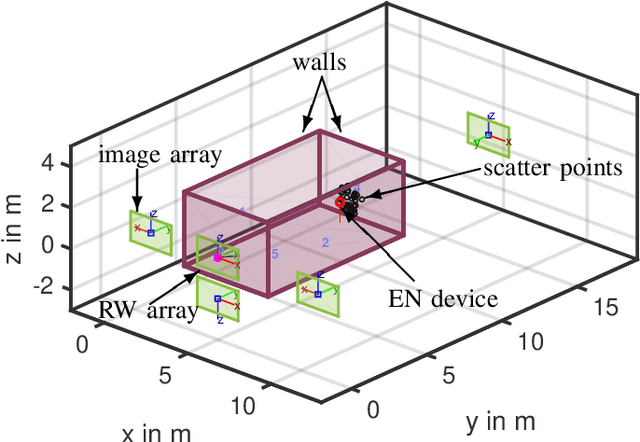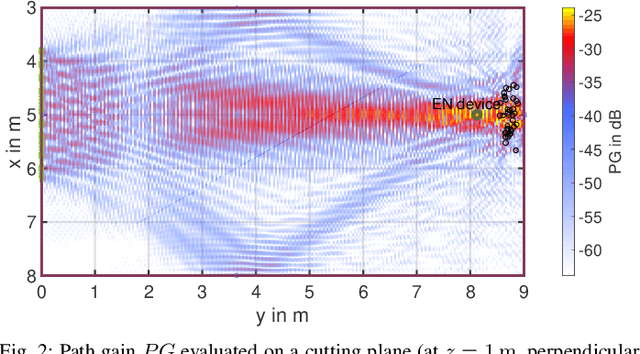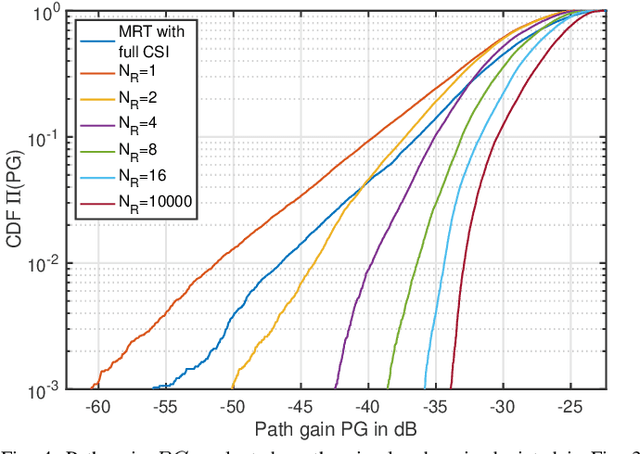Location-based Initial Access for Wireless Power Transfer with Physically Large Arrays
Paper and Code
Feb 22, 2022



Radio frequency (RF) wireless power transfer (WPT) is a promising technology for 6G use cases. It enables a massive, yet sustainable deployment of batteryless energy neutral (EN) devices at unprecedented scale. Recent research on 6G is exploring high operating frequencies up to the THz spectrum, where antenna arrays with large apertures are capable of forming narrow, "laser-like" beams. At sub-10 GHz frequencies, physically large antenna arrays are considered that are operating in the array near field. Transmitting spherical wavefronts, power can be focused in a focal point rather than a beam, which allows for efficient and radiation-safe WPT. We formulate a multipath channel model comprising specular components and diffuse scattering to find the WPT power budget in a realistic indoor scenario. Specular components can be predicted by means of a geometric model. This is used to transmit power via multiple beams simultaneously, increasing the available power budget and expanding the initial access distance. We show that exploiting this "beam diversity" reduces the required fading margin for the initial access to EN devices.
 Add to Chrome
Add to Chrome Add to Firefox
Add to Firefox Add to Edge
Add to Edge